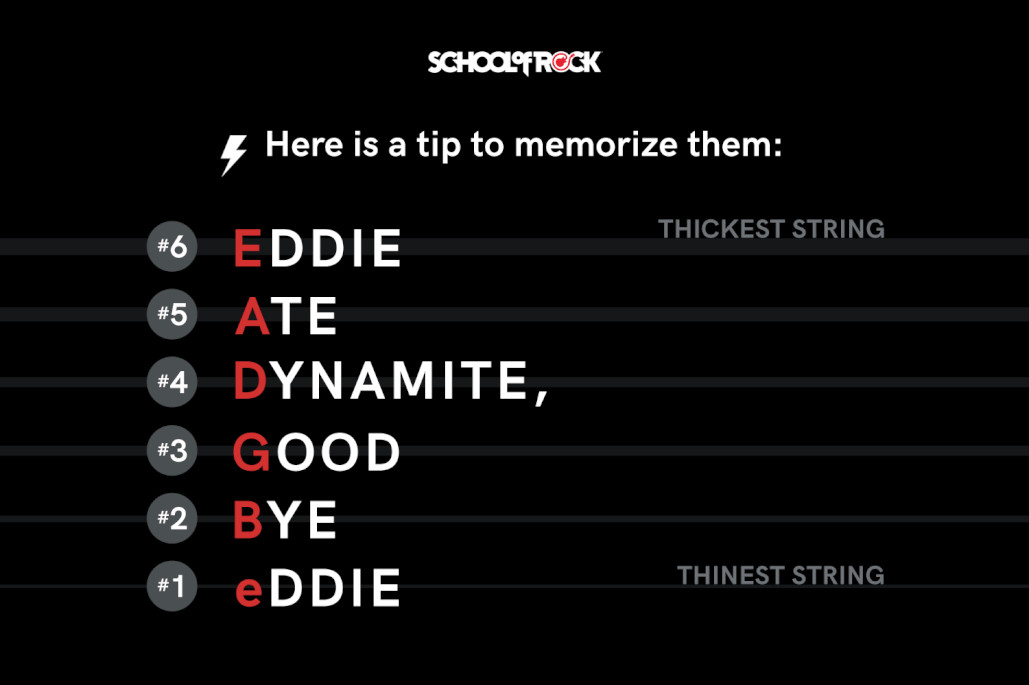Learning to tune your guitar is a fundamental step for any aspiring musician. It doesn’t matter how dedicated you are to practicing; a guitar that’s out of tune simply won’t produce the sounds you expect. This guide will walk you through the essentials of tuning a 6 string guitar, helping you identify the correct guitar notes, whether you’re using a tuner or relying on your ear. Getting your guitar in tune is the first step to making practice sessions enjoyable and musically rewarding.
The Basics of Tuning Your 6 String Guitar and its Notes
Guitar tuning is all about adjusting the tension of the strings, and this is controlled by the tuning pegs located on the guitar’s headstock. Turning these pegs will either raise or lower the pitch of the strings. Tightening a string increases its pitch, making it sound sharper, while loosening it lowers the pitch, making it flatter.
How Often Should You Tune Your 6 String Guitar?
For optimal sound, you should tune your 6 string guitar every single time you plan to play it. Guitars are sensitive instruments and rarely maintain perfect tuning between sessions. Playing itself, especially techniques like string bending or extended practice periods, can cause a guitar to drift out of tune. Therefore, regularly checking your guitar tuning is a good habit to develop, even during your practice sessions. If a chord sounds off, even when you’re sure your finger placement is correct, it’s almost always a sign that your guitar strings have gone out of tune.
 Guitar tuning pegs on the headstock, essential for adjusting 6 string guitar notes.
Guitar tuning pegs on the headstock, essential for adjusting 6 string guitar notes.
Methods for Tuning Your 6 String Guitar Notes
Modern technology has made tuning incredibly accessible and straightforward with electronic tuners. However, developing your ear to tune using a reference note is also a valuable skill.
Tuning with a Chromatic or Pitch Tuner for Accurate 6 String Guitar Notes
Clip-on electronic tuners have revolutionized the process of guitar tuning. Unlike older models that required plugging in, these tuners attach directly to your guitar’s headstock. They detect string vibrations and clearly indicate whether a string is flat (too low), sharp (too high), or perfectly in tune. They are effective for both acoustic and electric guitars, offering an inexpensive and highly accurate tuning solution. Many beginner guitar amplifiers also now come equipped with built-in tuners, adding to the convenience.
Tuning Your 6 String Guitar Notes Without a Tuner
Learning to tune a guitar without a tuner is a useful skill, especially for situations where you might not have one available.
Mobile apps offer a fantastic alternative. Numerous tuner apps are available for smartphones, many of which are free. These apps utilize your device’s microphone to listen to the pitch of your guitar strings. As you adjust the tuning pegs, the app’s display provides real-time feedback, showing you exactly when each of your 6 String Guitar Notes is correctly tuned.
Another method involves using a reference pitch from a reliable source, such as a piano or another guitar known to be in tune.
This method demands a bit more practice as you must tune one string by ear to match the reference pitch. It involves carefully listening to the reference note, playing the corresponding note on your guitar, and discerning any pitch differences. Adjust the guitar string until it perfectly matches the reference. Once you have one string correctly tuned, you can then tune the remaining 6 string guitar notes by comparing them to fretted notes on already tuned strings.
Identifying 6 String Guitar Names and Notes: EADgbe
A standard guitar has 6 strings. When listed from the thickest to thinnest, or lowest pitch to highest, the standard 6 string guitar notes are E, A, D, G, B, and E.
 Visual representation of 6 string guitar notes and string order.
Visual representation of 6 string guitar notes and string order.
Memory aids can be helpful for remembering these 6 string guitar names. Common mnemonics include: Eddie Ate Dynamite, Good Bye Eddie or Eat A Dead Goose Before Eating. The 1st string is the thinnest, highest pitched E, and the 6th string is the thickest, lowest pitched E.
 Mnemonic for memorizing 6 string guitar notes: Eddie Ate Dynamite, Good Bye Eddie.
Mnemonic for memorizing 6 string guitar notes: Eddie Ate Dynamite, Good Bye Eddie.
Beyond standard tuning, exploring alternate guitar tunings can open up new sonic possibilities and are worth investigating as you progress.
Step-by-Step Tuning Guide for Each of the 6 String Guitar Notes
Tuning Your Low E Note (6th String)
If you have a reference pitch, start by tuning your low E string, the thickest of the 6 string guitar notes. If you don’t have a reference, you can find an E note by playing the 7th fret on the A string (5th string).
Tuning the 6th String (Low E)
Tune the low E string to match your reference E note. Adjust the tuning peg to tighten or loosen the string until the pitches are identical.
Tuning the 5th String (A Note)
Next, tune your A string. Play the 5th fret of the low E string (6th string). This fretted note should be an A. Tune your open A string to match this pitch.
Tuning the 4th String (D Note)
Tune your D string by playing the 5th fret of the A string (5th string). This note is a D. Adjust your open D string until it matches.
Tuning the 3rd String (G Note)
Tune your G string by playing the 5th fret of the D string (4th string). This fretted note should be a G. Tune your open G string to match.
Tuning the 2nd String (B Note)
The tuning pattern changes slightly here. Tune your B string by playing the 4th fret of the G string (3rd string). This note is a B. Tune your open B string to match.
Tuning the 1st String (High E Note)
Finally, tune your high E string. Play the 5th fret of the B string (2nd string). This note is an E. Tune your open high E string to match this pitch.
Once you become comfortable tuning all 6 string guitar notes, you’ll be ready to explore more advanced guitar skills, like reading guitar tabs and playing your favorite songs.

Guitar Summer Camps: Learn More About 6 String Guitar Notes and Playing
Summer music camps, like those offered at School of Rock, provide an immersive environment to learn not only how to tune your guitar and understand 6 string guitar notes, but also how to play songs as part of a band. Camps cover a range of skills from songwriting to stage presence for guitarists, catering to all skill levels.
Explore Summer Camps
Tips for Keeping Your 6 String Guitar in Tune Longer
After successfully tuning your 6 string guitar notes, there are several preventative measures you can take to maintain tuning stability.
- Regularly Change Your Strings: Old strings lose their elasticity and ability to hold tune. When your strings start sounding dull or frequently go out of tune, it’s time to replace them.
- Stretch New Strings: When you install new strings, stretching them is crucial. Gently pull on the strings or play for a short period after stringing to help them settle in and hold their pitch better. Be careful not to pull too hard, which could cause them to break.
- Proper Guitar Care: Protect your guitar from extreme changes in temperature and humidity. Store your guitar in its case or gig bag when not in use and wipe down the strings with a soft cloth after playing to remove oils and sweat.
By following these tuning methods and maintenance tips, whether you prefer using an electronic tuner or tuning by ear, you’ll ensure your 6 string guitar remains in tune, making your practice sessions more productive and enjoyable.
Considering a new guitar? Check out our Guitar Buying Guide

